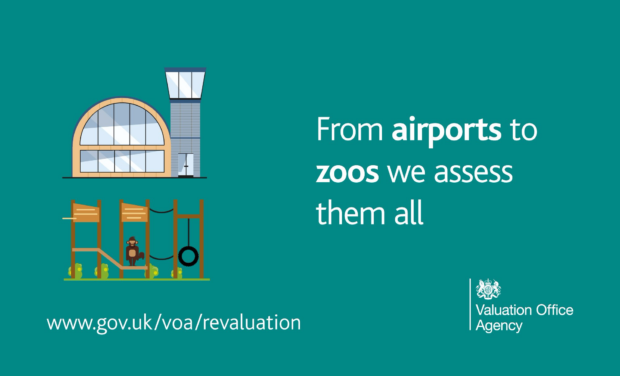Meera Nayyar is a Customer Strategy Lead for the Valuation Office Agency (VOA). In this guest post, she writes about how the VOA is using GOV.UK Notify to keep businesses informed about changes to their rates.
At the VOA we’ve recently revalued the rateable values for 1.96m business premises across England and Wales. It’s the first time we’ve done this since 2010.
Traditionally, revaluations involved the VOA sending out draft summary valuations to customers on paper, along with their bill. We recognise time is money for many businesses, so we wanted to save our customers as much time as we could.
Like the rest of government, we’re eager to use technology to improve services for users, so we’re working to cut out unnecessary paper.

Moving draft values online
This year, for the first time, we published draft rateable values for business rates online only, and we used GOV.UK Notify to send reminders for businesses to check them.
Rateable values are used by local authorities to calculate business rates bills. By publishing the draft rateable values six months before they come into force, businesses can get an idea of likely changes to their business rates.
Businesses had six months from the publication of the draft rateable values to query it. Six months can fly by when people are corresponding on paper, so we hope publishing the values online quickens this process for users.
Because the draft rateable values were published online for the first time, it was really important that businesses could see their rateable value, understand it and query their property details if necessary. That’s where GOV.UK Notify came in.
Why we used GOV.UK Notify
GOV.UK Notify allows us to send text and email reminders to businesses, letting them know that draft rateable values are online and available for review.
We can send large volumes of these notifications out at the touch of a button, which means our move to online-only draft rateable values is supported by a reliable, and flexible, notification system.
The unexpected benefits of GOV.UK Notify
By testing and iterating in GOV.UK Notify, we found that:
- customers responded more to authoritative tones rather than overly personal emails
- customers responded more to emails received on a Monday and Wednesday rather than a Friday
- customers were more likely to respond to emails sent at 10am than at other times
We knew GOV.UK Notify would provide a vital function for our service, but there were also benefits we hadn’t anticipated.
With GOV.UK Notify we can follow user journeys closely. It’s easy for us to see the best times and days of the week to send out notifications. This is because it’s simple to integrate Google Analytics with GOV.UK Notify and spot patterns in how our users engage with our service.
We can track the numbers of customers who engage with their notifications, and when they do so. For example, we can track engagement by seeing how many users are clicking on links in emails.
GOV.UK Notify also allows us to easily change the content of our messages flexibly. We can test different templates to find the best way to get our message across.

Working with GDS during GOV.UK Notify's private beta
We were one of the first service teams to use GOV.UK Notify, having been invited to the private beta back in June 2016. Our feedback was welcomed by the GOV.UK Notify team and, where possible, they’ve involved us in helping them iterate the product.
GOV.UK Notify’s flexibility meant we could make a lot of these changes and iterations ourselves. But there were times when we needed to work closely with the team at GDS and suggested improvements.
During the private beta, it was important for us to be able to pick up the phone and talk to the GOV.UK Notify team, so we could find solutions quickly and collaboratively.
For example, we wanted to schedule notifications in advance. Initially, GOV.UK Notify allowed us to schedule 24 hours in advance, but we needed to extend this to 72 hours. We phoned GOV.UK Notify product manager Fajer Qasem and, after talking through the issue together, her team changed advanced scheduling from 24 hours to 72 hours.
Why we’d recommend GOV.UK Notify
We’d definitely recommend GOV.UK Notify to other service teams, particularly ones that need to send out large volumes of notifications.
GOV.UK Notify has not only helped us deliver notifications easily, it’s also helped us understand our users better.
Now we understand GOV.UK Notify’s potential, we’re looking at other ways we can use it.
GOV.UK Notify is self-service, meaning central government service teams can start using it right away. For most service teams it's completely free to use. For more information, visit the GOV.UK Notify product page.
Follow GDS on Twitter and subscribe to this blog by signing up for email alerts.